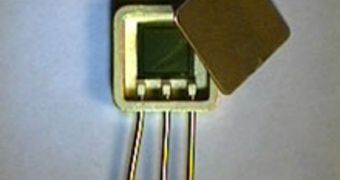Ithaca, NY-based Widetronix is currently developing a new generation of nuclear batteries, called betavoltaics. The devices are able to produce a steady flow of low current levels, and can last for up to 25 years, experts say. The batteries will soon undergo their testing phase, and the entire process will be supervised by experts at Lockheed Martin. In addition to their military applications, in military bunkers and planes, the new batteries could also be used to power up implanted medical devices in the near future, without the risk of the person wearing them suffering from radiation poison.
According to Technology Review, the batteries draw their energy from the steady nuclear decay of hydrogen isotopes inside the cells. They are not depleted all at once, but over long time frames, of up to a quarter of a century. The instruments could be of significant importance in powering the locks on a nuclear military installation, for example, so as to prevent anyone from hampering with the data, or deleting them altogether. The information contained within those facilities is simply too important and sensitive to be lost. Once the batteries detect a breach, they could send an alert signal to a nearby military complex, which could then deploy troops to annihilate the intruders.
Inside the batteries, the hydrogen compound tritium is constantly decaying. As it does so, it releases high-energy electrons, which are also known as beta particles. A semiconductor is then used to capture these electrons, and convert them into low and constant levels of electricity that can then be used to power up a number of devices, depending on needs. The half-life of the isotopes powering the batteries is the main element that determines how long the devices themselves last. Scientists believe that they could endure for any length of time between a few years and a century, Technology Review reports.
The technology is more than 50 years old, but poor-quality semiconductors meant that not enough amounts of electrons were harvested for conversion into electrical current. In order to be implanted with medical devices, they had to contain dangerous isotopes, which also posed a hazard to the health of the patients. They were phased out when lithium-ion batteries appeared later on, but now, with the incredible advancements made by the semiconductor industry, the idea is coming back in full force.

 14 DAY TRIAL //
14 DAY TRIAL //